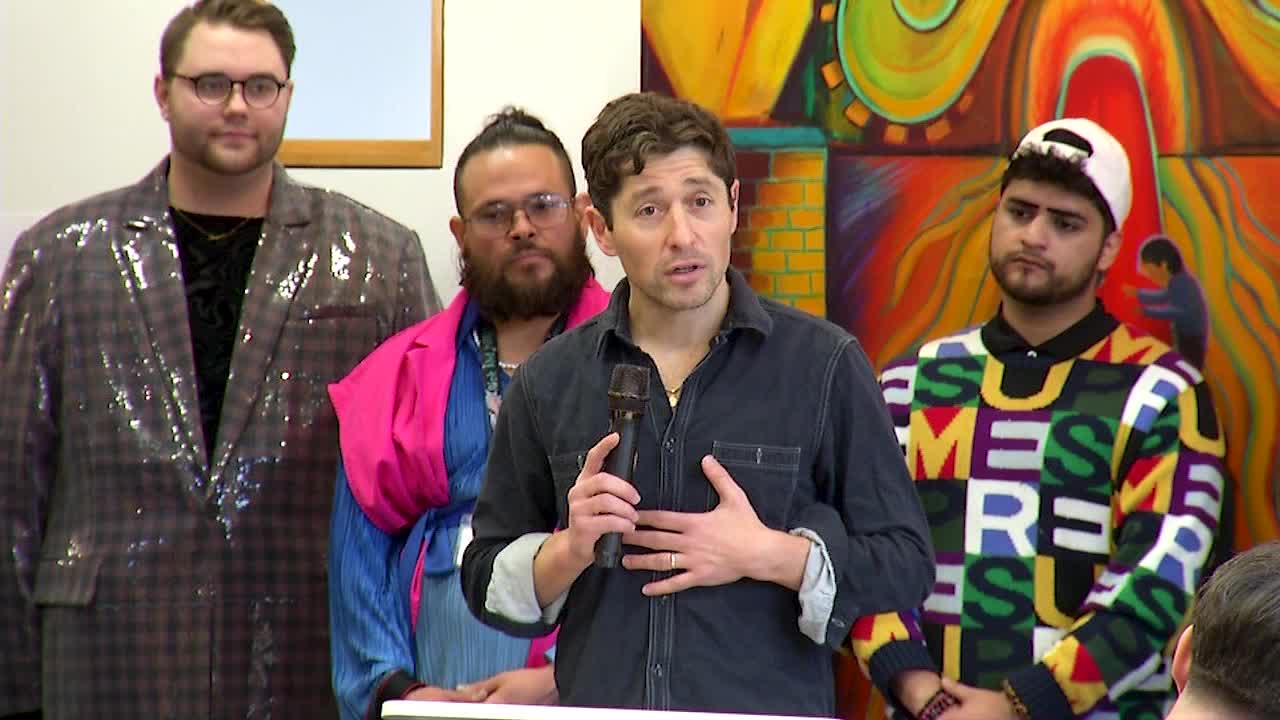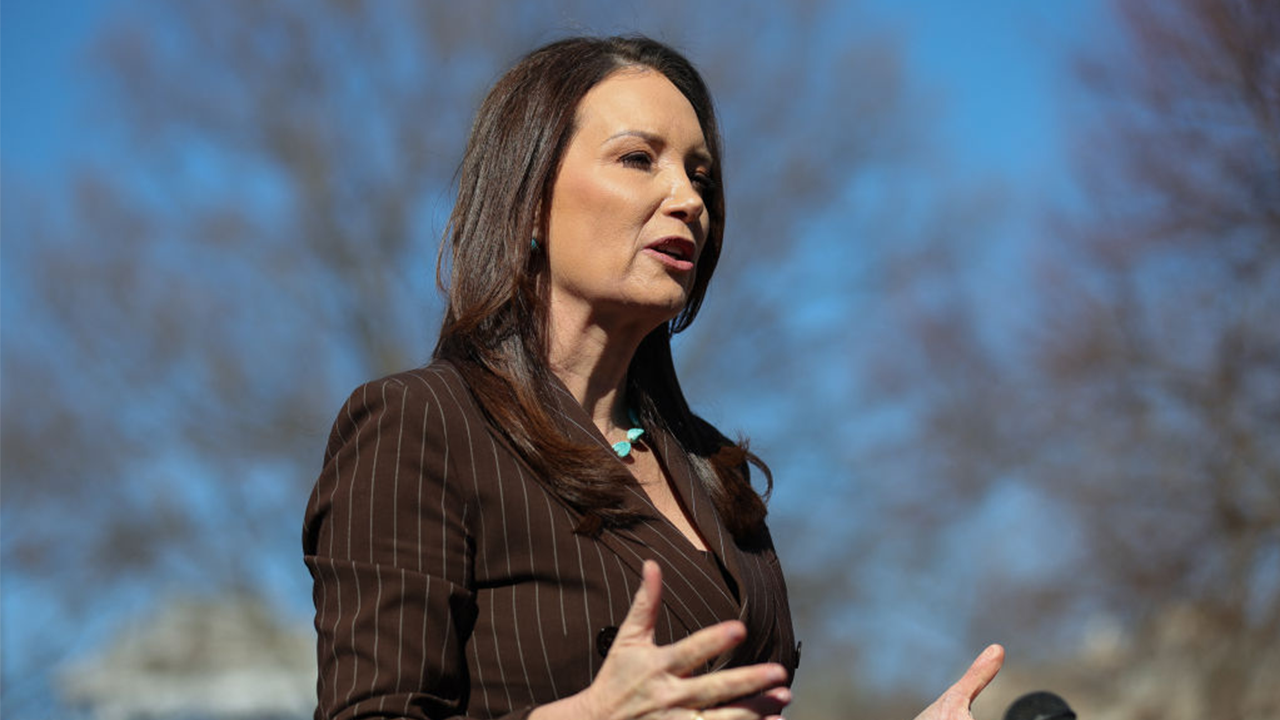Health
This disease kills more people than all cancers and accidents combined
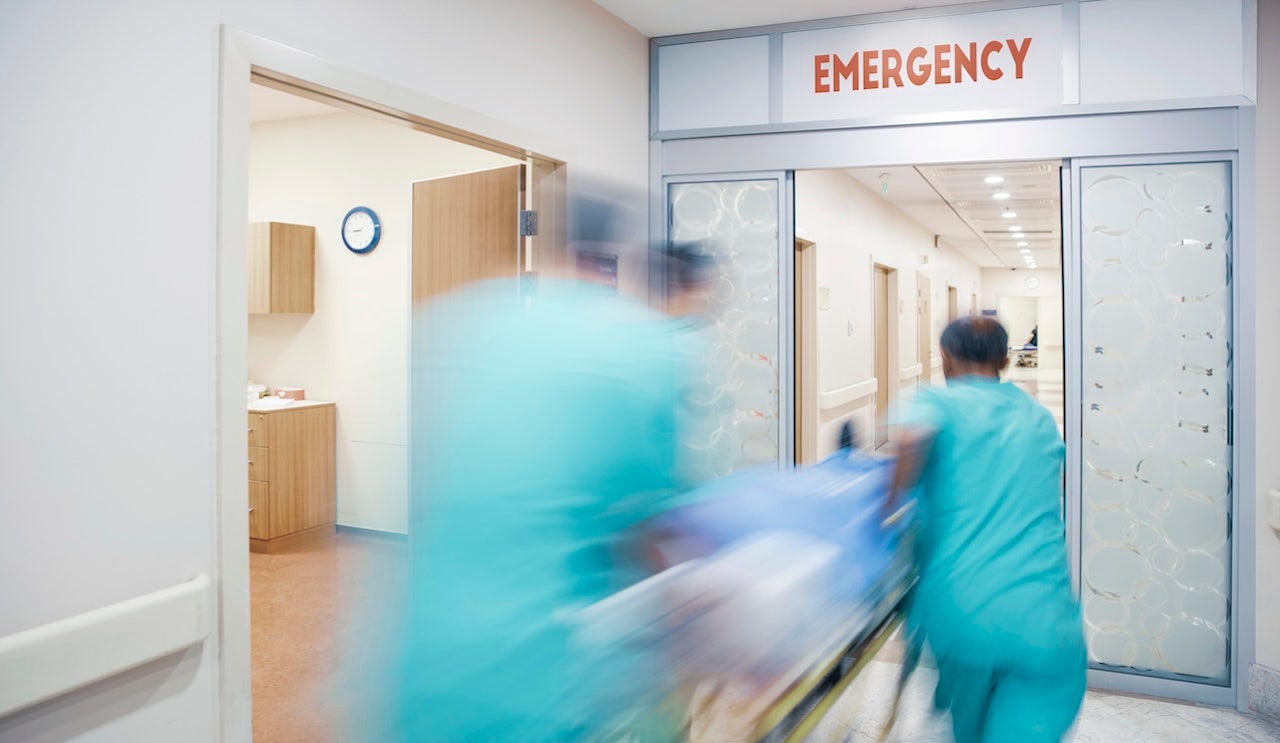
Heart disease remains the top killer of Americans as risk factors continue to grow.
The latest statistics were revealed in the American Heart Association’s annual report, 2025 Heart Disease and Stroke Statistics.
The report, which was published on Jan. 27 in the AHA’s journal Circulation, revealed that cardiovascular disease kills more people than all types of cancer and accidental deaths combined.
7 BLOOD PRESSURE MISTAKES THAT COULD BE THROWING OFF YOUR READINGS
In 2022 — the most recent year for which mortality data is available — a total of 941,652 people died of heart disease-related conditions, according to the report. This was a little more than 10,000 more deaths than the prior year.
The age-adjusted death rate decreased slightly from last year, however.
In 2022 — the most recent year for which mortality data is available — a total of 941,652 people died of heart disease-related condition (iStock)
“Overall, we are seeing cardiovascular-related deaths leveling out compared to 2022,” said Dr. Bradley Serwer, a Maryland-based cardiologist and chief medical officer at VitalSolution, an Ingenovis Health company that offers cardiovascular and anesthesiology services to hospitals.
“We are making some improvements in regard to improved prevalence of hyperlipidemia (high cholesterol) and lower incidence of smoking, but have lost ground in regard to diabetes, obesity and hypertension,” Serwer, who was not involved in the report, told Fox News Digital.
DIABETES, HEART DISEASE CASES SKYROCKET — AND SCIENTISTS SUGGEST A KEY REASON
Someone dies of heart disease every 34 seconds in the U.S., and a total of 2,500 die per day, according to Keith Churchwell, M.D., the volunteer president of the American Heart Association.
“It’s alarming to note that excess weight now costs us even more lives than smoking.”
“Those are alarming statistics to me – and they should be alarming for all of us,” Churchwell said in a press release.
“Too many people are dying from heart disease and from stroke, which remains the fifth leading cause of death.”
Risk factors
The report also detailed the prevalence of specific risk factors for heart disease.
More than 72% of U.S. adults have “unhealthy weight,” which is defined as a body mass index of at least 25, the report stated.
Nearly 42% of those adults meet the criteria for obesity (a body mass index of 30 or more).

Nearly 42% of those adults meet the criteria for obesity (a body mass index of 30 or more). (iStock)
The report also revealed that more than half of U.S. adults (57%) have type 2 diabetes or prediabetes.
“Although we have made a lot of progress against cardiovascular disease in the past few decades, there is a lot more work that remains to be done,” American Heart Association volunteer Dhruv S. Kazi, M.D., wrote in an editorial that accompanied the report.
FRIENDS, FAMILY MAY PROTECT AGAINST HEART ATTACK, STROKE AND TYPE 2 DIABETES, STUDY SUGGESTS
“If recent trends continue, hypertension and obesity will each affect more than 180 million U.S. adults by 2050, whereas the prevalence of diabetes will climb to more than 80 million.”
Experts predict a 300% increase cardiovascular-related healthcare costs, added Kazi, who is also head of health economics and associate director of the Richard A. and Susan F. Smith Center for Outcomes Research in Cardiology at Beth Israel Deaconess Medical Center.

“Too many people are dying from heart disease and from stroke, which remains the fifth leading cause of death.” (iStock)
The report also called out different rates of risk factors among different races and ethnic groups.
Black women were found to have the highest rate of obesity (57.9%) and Asian women had the lowest rate (14.5%).
Black women also had the highest rate of blood pressure (58.4%) and Hispanic women, at 35.3%, had the lowest rate.
“Just because we are seeing improvements in smoking and high cholesterol doesn’t mean we can back off.”
“We are also seeing a rise in obesity in our youth, with as many as 40% having unhealthy weight,” Serwer warned.
“This trend continues into adulthood, when we see nearly 60% of adults having unhealthy weight.”
Excess weight is a contributing factor in as many as 1,300 additional deaths per day in the U.S., or nearly 500,000 per year, according to the report.
“It lowers life expectancy by as much as 2.4 years compared to a healthy weight,” said American Heart Association volunteer Latha P. Palaniappan, M.D., a professor of cardiovascular medicine at Stanford University in Palo Alto, California.
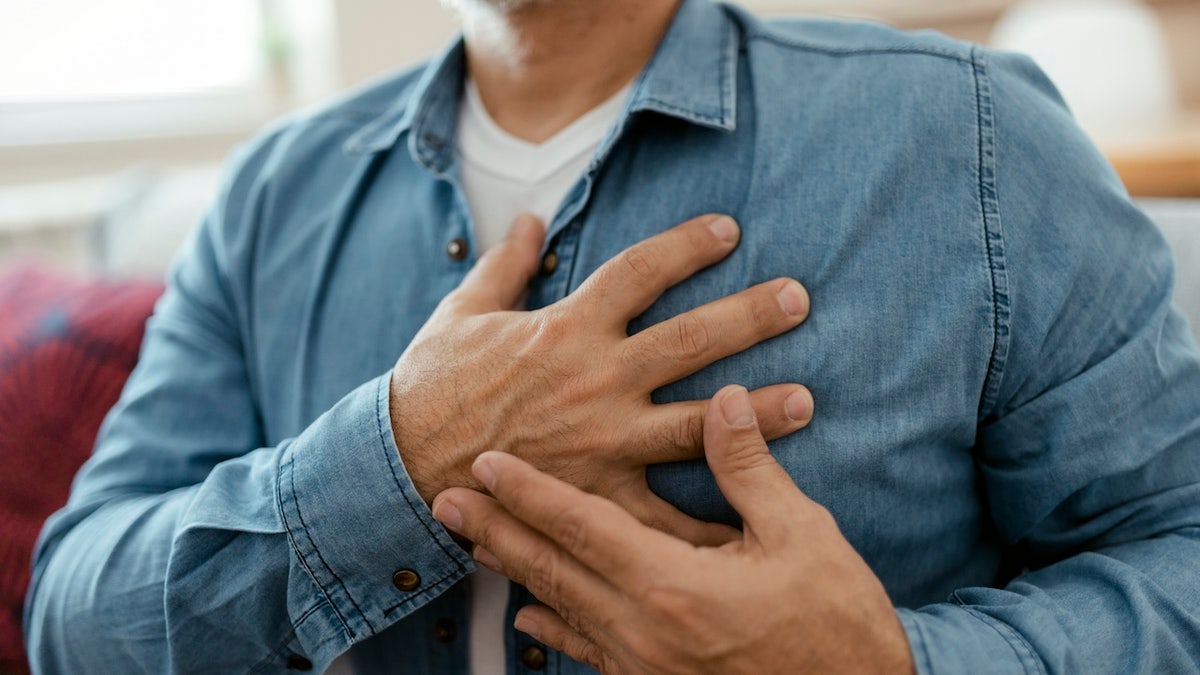
“Any medical or clinical therapies that can treat the risk factors that contribute to cardiovascular disease are essential.” (iStock)
“It’s alarming to note that excess weight now costs us even more lives than smoking – as smoking rates have actually fallen in recent years. Being overweight is the new smoking when it comes to health threats.”
CLICK HERE TO SIGN UP FOR OUR HEALTH NEWSLETTER
One positive finding in the report is that rates of high cholesterol have dropped, which is attributed to improved dietary and lifestyle factors, availability of medications and “better clinical control.”
“Recent clinical research has identified a number of new medication therapies to address the growing burden of obesity, as well, and we look forward to learning more about those advances as the body of science builds,” Churchwell noted.
What needs to change?
The researchers called for interventions to help reduce heart disease risk factors.
“Any medical or clinical therapies that can treat the risk factors that contribute to CVD are essential,” Churchwell wrote. “…We need to stop these risk factors in their tracks, keep people healthy throughout their lifespan.”
Serwer agreed that the best way to combat this top killer is to aggressively attack the risk factors.
“Just because we are seeing improvements in smoking and high cholesterol doesn’t mean we can back off,” he said.
For more Health articles, visit www.foxnews.com/health
“We need to continue to aggressively attack tobacco use and treat hyperlipidemia while increasing efforts to treat obesity, high blood pressure and diabetes.”

Health
Trump Will Withhold Money From Schools That Require Covid Vaccines

President Trump ordered on Friday that federal funding be withheld from schools and universities that require students to be vaccinated against Covid, White House officials said, another step in the administration’s campaign against coronavirus vaccine requirements.
It was not clear how widely impactful the order would be. No states require K-12 students to be vaccinated against Covid. Only 15 colleges still required Covid vaccines for students as of late last year, according to No College Mandates, an advocacy group.
Riding the same wave of anti-vaccine sentiment, 21 states had already moved to outlaw student Covid vaccine mandates, the National Academy for State Health Policy, a nonpartisan research group, has said. And Republican elected officials across the country have pursued a tide of anti-vaccine measures, including a proposed ban in Montana on administering mRNA vaccines, which include some Covid shots, and a ban on a local health department in Idaho offering any Covid vaccines.
The Centers for Disease Control and Prevention has said that monitoring has shown that Covid vaccines are safe for children.
Younger people are much less likely to be severely sickened by the coronavirus, but doctors have said that the virus has still harmed many children.
For Mr. Trump, whose first administration accelerated the development and rollout of Covid shots, saving some 140,000 lives in their early months of availability, the latest executive order was a turn toward reining in efforts to promote the vaccines.
Shortly after returning to office last month, Mr. Trump also said he would reinstate more than 8,000 troops who had been dismissed for refusing the Covid vaccine.
The executive order on Friday largely took aim at mandates implemented in 2021, shortly after Covid vaccines became available. Some local school districts, especially in more liberal regions, required the shots for students participating in sports or other extracurricular activities, or for adult visitors to school buildings, including parents.
School-based mandates tend to raise vaccination rates among children, researchers have found. Those vaccinations, in turn, can protect students who might be vulnerable to more serious illness and dampen circulation of the virus, potentially sparing parents or grandparents from being exposed.
But even in more liberal areas, school mandates won only modest support. Some researchers argued they were counterproductive, polarizing communities and damaging trust in scientific institutions. As the pandemic progressed, resistance to mandates mounted. Most of the policies were short-lived.
Covid vaccine mandates at colleges also improved vaccination rates, researchers have found, with health benefits that extended to surrounding communities. In counties whose colleges all mandated vaccines, one study found, fewer residents died from Covid.
Few teachers and school staff members are working under Covid vaccine mandates, either. No state requires them, and the nation’s two largest school districts, New York City and Los Angeles, both lifted teacher Covid vaccine requirements in 2023.
The order applies only to Covid vaccines, leaving untouched state requirements that school children be vaccinated against measles, mumps, polio, tetanus, whooping cough and chickenpox. States excuse children who, for medical reasons, cannot receive vaccines, and many also allow exemptions for religious or other reasons.
At least some medical schools require Covid shots for students. It was not immediately clear if those rules would be affected by the new order.
Dana Goldstein and Tyler Pager contributed reporting.
Health
Woman with 5% chance of survival after ski accident makes 'miracle' recovery

A young woman who was given just a 5% chance of survival after suffering a horrific skiing accident is calling her recovery a “miracle.”
Olivia Corbiere, 23, suffered a brain bleed, lung damage, a broken pelvis and three fractured vertebrae when she fell 15 feet down a ravine in Bansko, Bulgaria, during a ski outing in March 2024, news agency SWNS reported.
Initially, doctors told Corbiere’s parents, Linzi Corbiere and Sebastien Corbiere, that their daughter had a limited chance of pulling through — and might never talk again if she did.
MAN STUNNED WHEN RESTAURANT STRANGER PAYS FAMILY’S $85 BILL
“We were told she had a 5% chance of living and may not speak,” the mother said, according to SWNS.
Corbiere, a kitchen designer from England, had gone on the five-day spring ski trip with a group of close friends and her 19-year-old-sister, Phoebe.
Left to right, a group of friends — including Olivia Corbiere, center — just moments before Corbiere suffered a life-threatening accident. (SWNS)
On March 17, the group got up early for a day of skiing in the mountains. But shortly before lunch, things took a terrible turn.
“We were having a conversation about where we were going to eat,” said Corbiere. “That was one of the last things I remember before my accident.”
As she was heading along a ski path, her right ski crossed over her left and she began to lose control. The warm weather had melted the snow in such a way that Corbiere couldn’t turn her skis as she normally would, SWNS reported.
Corbiere slipped and then tumbled over the edge and down into a ravine.
“The actions of my sister and my friends that day are the reason why I’m here.”
Three of her fellow skiers jumped into the ravine to rescue her while the others called emergency services.
“The actions of my sister and my friends that day are the reason I’m here,” she said via SWNS. “They didn’t even think for a second not to jump in, and they could have hurt themselves. They are incredible. They’re fabulous. They’re amazing.”
PREGNANT WOMAN AND BABY SAVED AFTER DOCTORS FIND GRAPEFRUIT-SIZED TUMOR: ‘EXTREMELY RARE’
Corbiere was rushed to the hospital, where medics said they had “never seen” a head injury like hers.
The accident also left her with three fractured vertebrae, a broken pelvis, a broken eye socket and a broken nose, as reported by SWNS.
Given a life-threatening brain bleed, she endured four hours of emergency surgery, during which specialists removed part of her skull.
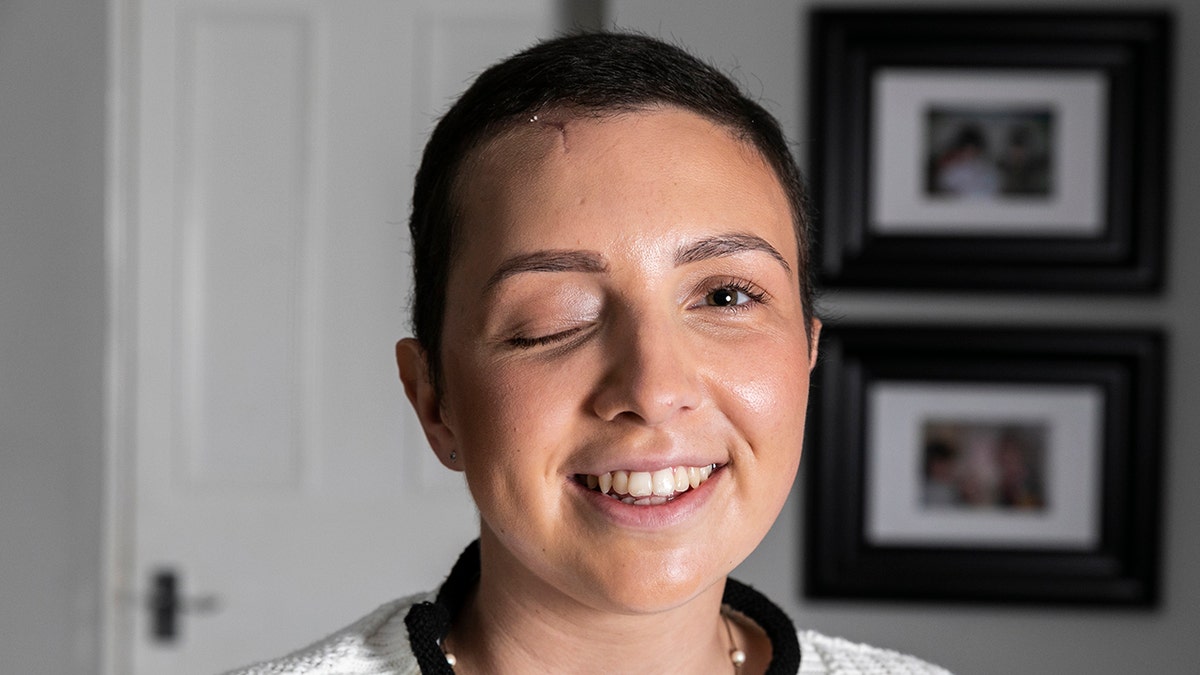
Olivia Corbiere suffered serious injuries during a skiing accident in 2024. She had to undergo four hours of emergency surgery, during which specialists removed part of her skull. She is still working on a full recovery. (SWNS)
Once she was back in the U.K. for continued medical treatment, doctors warned her parents to prepare for a long recovery lasting several months or perhaps years.
But Corbiere, who has no recollection of the five-week period following her accident, began to improve more quickly than expected.
“When I moved from the intensive care ward onto the neuro ward, it was about three or four days after that, my memory started to come back,” she said.
WOMAN SUFFERS PAIN FOR 20 YEARS UNTIL HER MYSTERY AILMENT IS FINALLY DIAGNOSED
Corbiere still has some hearing loss and nerve damage on the right side of her face — affecting her eyelid movement — along with a wound at the back of her head.
However, Corbiere’s mother said her daughter’s progress since the accident feels like a miracle.
CLICK HERE TO SIGN UP FOR OUR HEALTH NEWSLETTER
“We were told she had a 5% chance of living and may not speak, but she’s done all that, she’s proved them wrong. She’s getting stronger every day.”
The mom added, “Now, she can laugh and joke about herself and things like that – that’s really, really good. We’re absolutely over the moon.”
Corbiere has now returned home — and she’s even been able to enjoy meals out with her family.
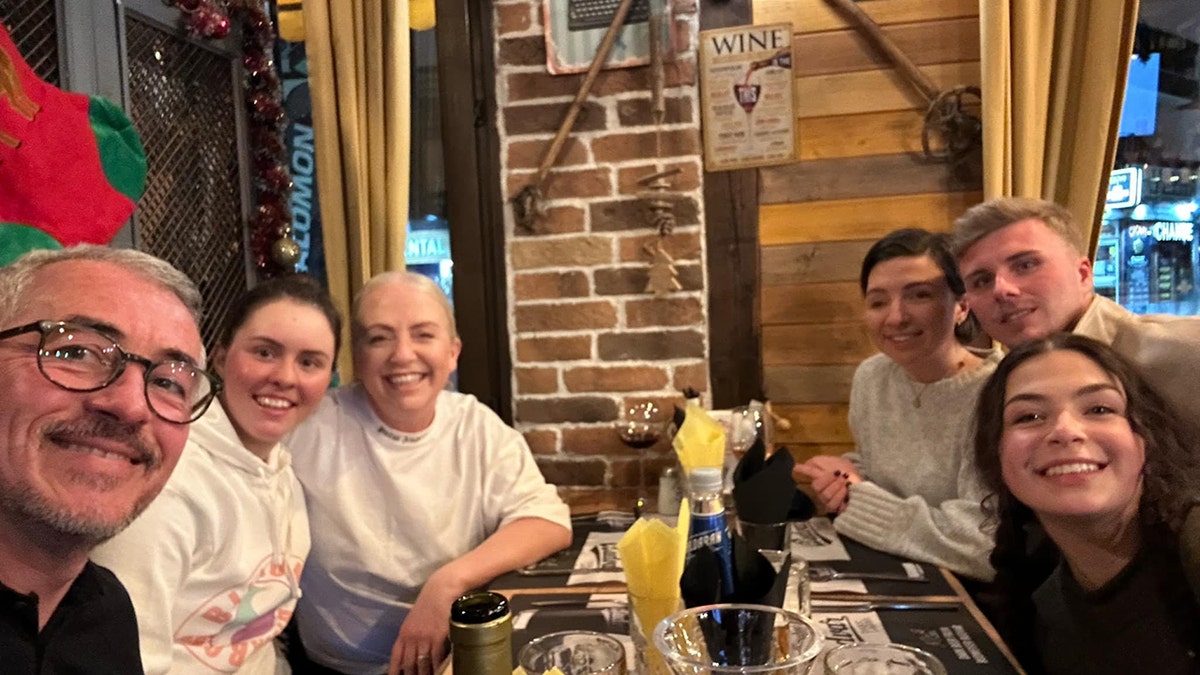
A grateful group out for a meal. From left, dad Seb Corbiere, translator Vicky, mom Linzi Corbiere, Olivia Corbiere, her boyfriend Tom, and her sister Phoebe Corbiere. (SWNS)
Her story has been widely shared, including on a fundraising page — and she said she’s stunned by how many people from all over the world have offered their sympathies after hearing about her accident, per SWNS.
“There are just so many good people in the world,” she said. “I can’t be any more grateful.”
For more Health articles, visit www.foxnews.com/health
One supporter wrote to the family, “Thinking of you all. I can’t imagine how tough this must be for you.”
Despite the traumatic injuries, Corbiere said she hopes to hit the slopes again soon.
“I’ve skied for years. I absolutely love it, and I shouldn’t let something that was a complete accident put me off something I enjoy doing,” she said.
“When I’m fully better and well, I’d love to try it again.”
Health
Eleanor Maguire, Memory Expert Who Studied London Cabbies, Dies at 54

Eleanor Maguire, a cognitive neuroscientist whose research on the human hippocampus — especially those belonging to London taxi drivers — transformed the understanding of memory, revealing that a key structure in the brain can be strengthened like a muscle, died on Jan. 4 in London. She was 54.
Her death, at a hospice facility, was confirmed by Cathy Price, her colleague at the U.C.L. Queen Square Institute of Neurology. Dr. Maguire was diagnosed with spinal cancer in 2022 and had recently developed pneumonia.
Working for 30 years in a small, tight-knit lab, Dr. Maguire obsessed over the hippocampus — a seahorse-shaped engine of memory deep in the brain — like a meticulous, relentless detective trying to solve a cold case.
An early pioneer of using functional magnetic resonance imaging (f.M.R.I.) on living subjects, Dr. Maguire was able to look inside human brains as they processed information. Her studies revealed that the hippocampus can grow, and that memory is not a replay of the past but rather an active reconstructive process that shapes how people imagine the future.
“She was absolutely one of the leading researchers of her generation in the world on memory,” Chris Frith, an emeritus professor of neuropsychology at University College London, said in an interview. “She changed our understanding of memory, and I think she also gave us important new ways of studying it.”
In 1995, while she was a postdoctoral fellow in Dr. Frith’s lab, she was watching television one evening when she stumbled on “The Knowledge,” a quirky film about prospective London taxi drivers memorizing the city’s 25,000 streets to prepare for a three-year-long series of licensing tests.
Dr. Maguire, who said she rarely drove because she feared never arriving at her destination, was mesmerized. “I am absolutely appalling at finding my way around,” she once told The Daily Telegraph. “I wondered, ‘How are some people so bloody good and I am so terrible?’”
In the first of a series of studies, Dr. Maguire and her colleagues scanned the brains of taxi drivers while quizzing them about the shortest routes between various destinations in London.
The results, published in 1997, showed that blood flow in the right hippocampus increased sharply as the drivers described their routes — meaning that specific area of the brain played a key role in spatial navigation.
But that didn’t solve the mystery of why the taxi drivers were so good at their jobs.
Dr. Maguire kept digging. Using M.R.I. machines, she measured different regions in the brains of 16 drivers, comparing their dimensions with those in the brains of people who weren’t taxi drivers.
“The posterior hippocampi of taxi drivers were significantly larger relative to those of control subjects,” she wrote in Proceedings of the National Academy of Sciences. And the size, she found, correlated with the length of a cabby’s career: The longer the cabby had driven, the bigger the hippocampus.
Dr. Maguire’s study, published in March 2000, generated headlines around the world and turned London taxi drivers into unlikely scientific stars.
“I never noticed part of my brain growing,” David Cohen, a member of the London Cab Drivers Club, told the BBC. “It makes you wonder what happened to the rest of it.”
Dr. Maguire wondered, too: Why (and how) did their hippocampi grow?
She followed up with other studies. One showed that the hippocampi of bus drivers — whose routes were set rather than navigated from memory — didn’t grow. Another showed that prospective taxi drivers who failed their tests did not gain any hippocampus volume in the process.
The implications were striking: The key structure in the brain governing memory and spatial navigation was malleable.
In a roundabout way, Dr. Maguire’s findings revealed the scientific underpinnings of the ancient Roman “method of loci,” a memorization trick also known as the “memory palace.”
This technique involves visualizing a large house and assigning an individual memory to a particular room. Mentally walking through the house fires up the hippocampus, eliciting the memorized information. Dr. Maguire studied memory athletes — people who train their brains to memorize vast amounts of information quickly — who used this method, and observed that its effectiveness was “reflected in its continued use over two and a half millennia in virtually unchanged form.”
But recalling information was only half the story.
In studying patients with damage to the hippocampus, including those with amnesia, Dr. Maguire found that they couldn’t visualize or navigate future scenarios. One taxi driver, for instance, struggled to make his way through busy London streets in a virtual-reality simulation. Other amnesiacs couldn’t imagine an upcoming Christmas party or a trip to the beach.
“Instead of visualizing a single scene in their mind, such as a crowded beach filled with sunbathers, the patients reported seeing just a collection of disjointed images, such as sand, water, people and beach towels,” the journal Science News reported in 2009.
The hippocampus, it turns out, binds snippets of information to construct scenes from the past — and the future.
“The whole point of the brain is future planning,” Dr. Maguire was quoted as saying in Margaret Heffernan’s book “Uncharted: How to Navigate the Future” (2020). “You need to survive and think about what happened when I was last here, is there a scary monster that will come out and eat me? We create models of the future by recruiting our memories of the past.”
Eleanor Anne Maguire was born on March 27, 1970, in Dublin. Her father, Paddy Maguire, was a factory worker. Her mother, Anne Maguire, was a receptionist.
Growing up, Eleanor was obsessed with “Star Trek.”
“My first scientific hero was fictional — Spock, science officer on the Starship Enterprise,” she told the journal Current Biology in 2012. “He embodied so much of what attracted me to science. He was inquisitive, logical, honest, meticulous, calm, fearless in facing the unknown, innovative and unafraid of taking risks.”
She graduated from University College Dublin in 1990 with a degree in psychology, and returned to earn her doctorate there after receiving a master’s degree from the University College of Swansea (now Swansea University).
Dr. Maguire joined the faculty at University College London in 1995 and never left.
She is survived by her parents. Her brother, Declan, died in 2019, also of cancer.
At Dr. Maguire’s memorial service, Dr. Price spoke about the energy and excitement her friend and longtime colleague generated at the lab, recalling that Dr. Maguire’s mother had called nightly to remind her daughter to go home.
“It wasn’t just a job,” Dr. Price said. “It consumed us, day and night.”
There was a sense that they were onto something big.
“We were among the first to use cutting-edge technology to peer inside the healthy, living human brain and witness its functions in action,” Dr. Price said. “It was an exhilarating and transformative time in neuroscience, and Eleanor’s curiosity and creativity were instrumental to numerous discoveries.”
-
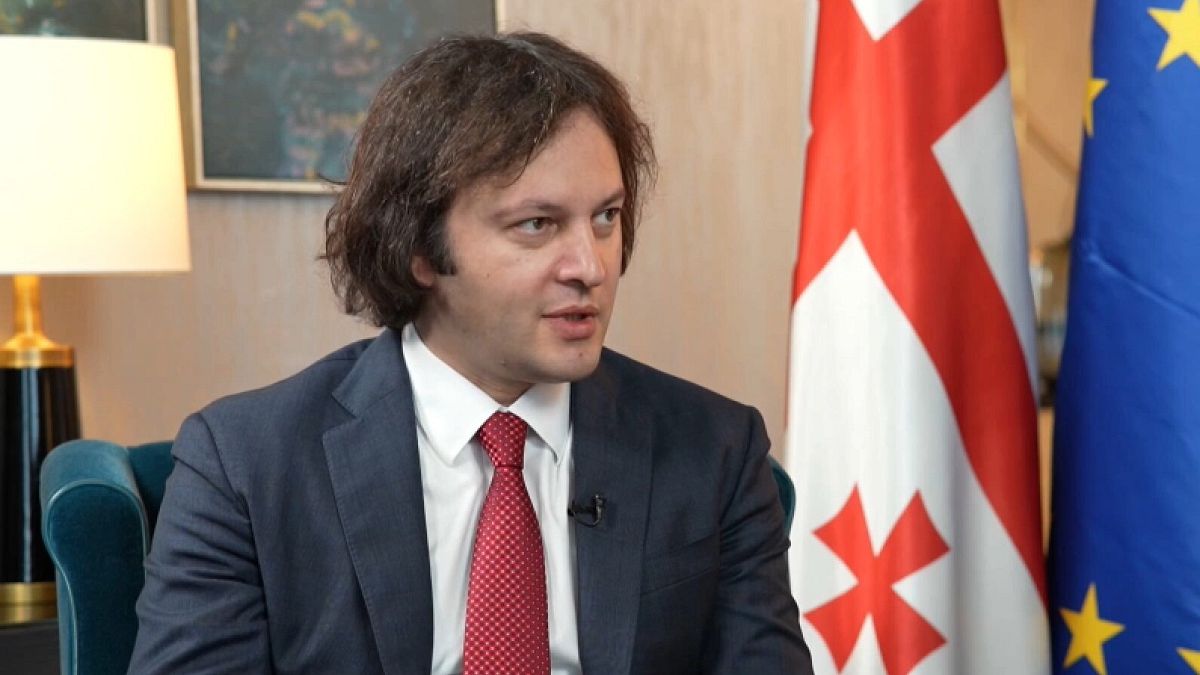
 World1 week ago
World1 week agoGeorgia’s EU membership by 2030 is achievable, PM Kobakhidze says
-

 News1 week ago
News1 week agoJustice Department sues Chicago and Illinois over 'sanctuary' laws
-
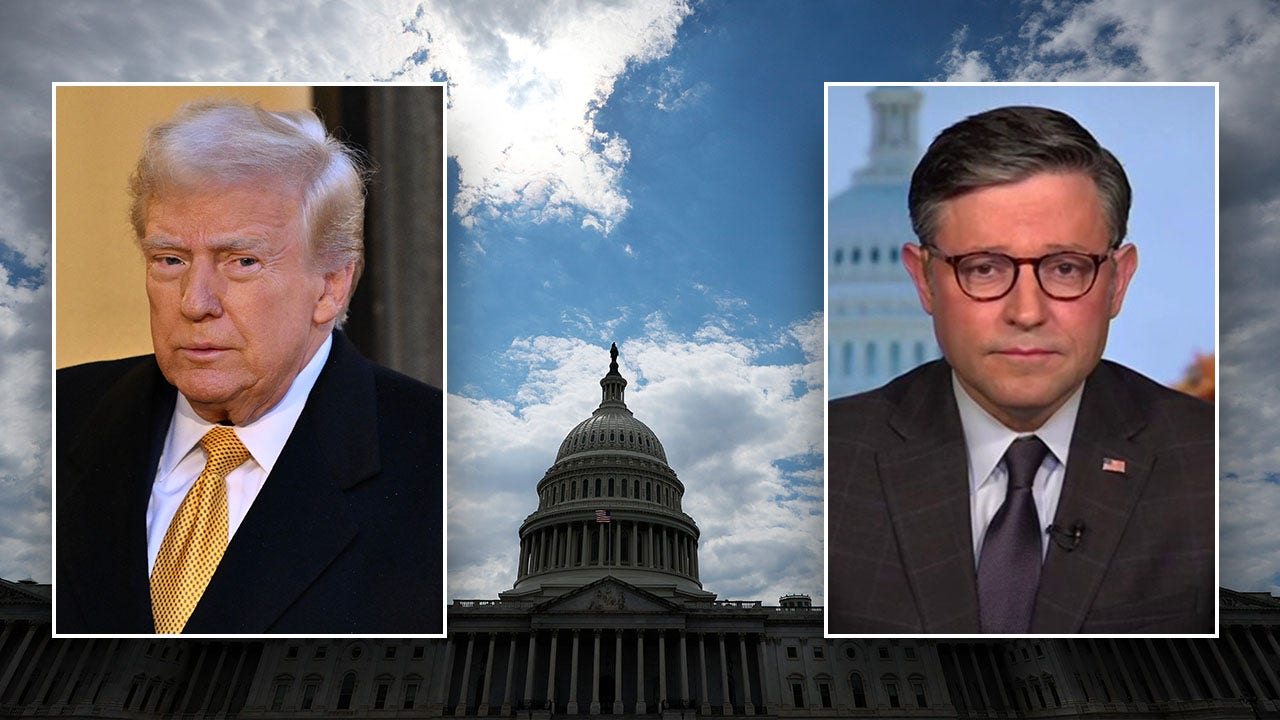
 Politics1 week ago
Politics1 week agoThe Hitchhiker's Guide to House Republicans releasing their tax and spending cut plan
-

 Politics1 week ago
Politics1 week agoSanctuary city mayors to testify at House Oversight after AG Bondi cuts them off from federal funds
-

 Technology1 week ago
Technology1 week agoTinder adds new Explore categories to help you find likeminded dates
-

 World1 week ago
World1 week agoCyprus jails Syrian man over death of young girl on migrant boat
-

 World1 week ago
World1 week agoFact check: Did Clinton set the precedent for mass federal worker buyouts?
-

 Politics1 week ago
Politics1 week agoHegseth to look into 'what went wrong' in Afghanistan and pledges accountability, slams diversity motto
